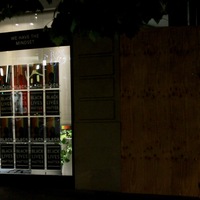LGBTQ-Stories-About-Us
About Us
The idea for an LGBTQ collection first began in April at #VirtualAZPride. Inspired by the creation of new virtual LGBTQ spaces, graduate student Carolyn Evans sent an email to project leaders Mark Tebeau and Catherine O'Donnell about the collection of LGBTQ items. A Journal of the Plague Year's Summer Fellowship provided an opportunity for curatorial fellows to both collect and curate LGBTQ items.
The LGBTQ collection was led by fellows Carolyn Evans and Lawson Miller, and advised by Professor Katy Kole de Peralta.
To learn more about our curators and a history of this project, see:About Methods
As a global rapid-response archive, a majority of our curatorial efforts were spent ensuring LGBTQ items were visible. While we were able to work with community partners like The Arizona LGBT+ History Project, #VirtualAZPride, and BeYou@ASU, community work ultimately represented a small portion of our work as curators. The predominate challenge facing our team was curating to make visible either explicit or implied LGBTQ items.
In identifying LGBTQ submissions, curators combined queer archival methods with light touch curation. In less academic terms, curators wanted to make LGBTQ items visible but refrain from imposing LGBTQ meaning. To offer a more concrete example of practice, consider the following items:

Contributor Self Identifies as LGBTQ= Yes
Submission Explicitly Discusses LGBTQ Issues= Yes
Image Explicitly Connects to LGBTQ Issues= Yes

Contributor Self Identifies as LGBTQ= No
Submission Explicitly Discusses LGBTQ Issues= Yes
Image Explicitly Connects to LGBTQ Issues= Yes
In order for an item to be placed in the LGBTQ item set, curators considered the following: Does the contributor identify as LGBTQ? Does the description mention "LGBTQ" or use the hashtag #LGBTQ+? Does the image show a verifiable LGBTQ symbol? For the first three items pictured above, the answer was Yes to at least one of the three questions. In the fourth item, "Community Rock Garden", curators have no way of knowing whether the rainbow rocks are meant to be rainbow flags or simply a pretty aesthetic choice. For this reason, the fourth item was not included in the collection.
About The Collection (Updated August 2020)
As the Summer Fellowship draws to a close, the collection holds over seventy items representing six different continents.
The archive will continue to collect materials during the 2020-2021 school year. Continue to check back on this exhibit to see updates to the collection.




